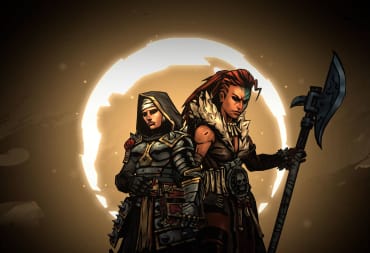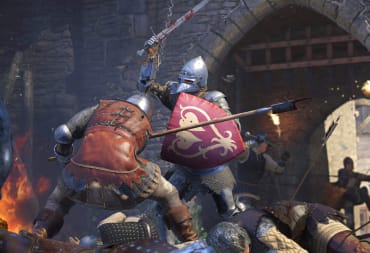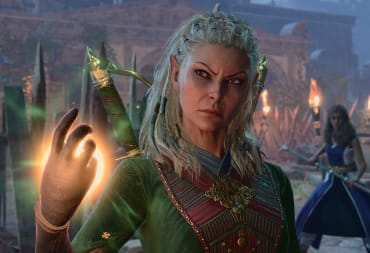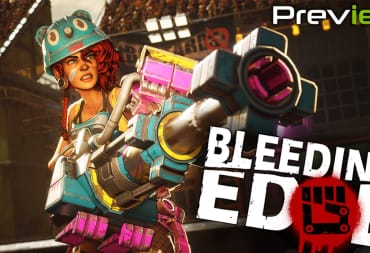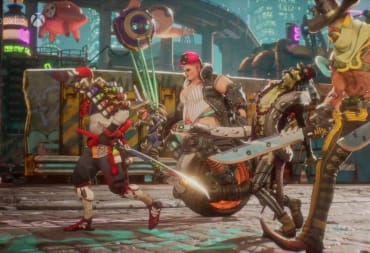If you’ve ever wished to combine the brutal glee of David Fincher’s Fight Club with the mutant powers of the X-Men, Bleeding Edge is probably for you. The colorful cast of augmented heroes start their own fight club - highly illegal, of course, but exhilarating enough to build a huge underground following. Bleeding Edge’s story is explained in the opening cutscene. While its world may expand beyond the peripheries in the future, all we know right now is that there’s a group of wacky fighters that bash each other’s brains in for our enjoyment. At its best, Bleeding Edge delivers on its premise: exuberant and over-the-top melee mayhem that’s sure to earn a lot of fans.
Not much has changed since we sampled our first taste of the game in February. That’s not a bad thing given how polished Bleeding Edge felt from its first beta. The full release tweaks the balancing and combat, showing promising signs that developer Ninja Theory is ready to deliver a multiplayer game that will only get better over time.

Earth's mightiest weirdos
For those unfamiliar with Bleeding Edge, it’s a 4v4 arena brawler with a host of bright and bizarre characters, each with their own distinct abilities. It might help to picture a melee-based Overwatch, but it's no impersonator. While the core mechanics of the ‘hero shooter’ genre are present - DPS, Support, and Tank classes; standard attacks and cooldown-based abilities - Bleeding Edge’s pacing and style distance it from the pack.
The 11-strong roster is filled with sharp and unique character designs. My personal favorite is Maeve, who’s surprisingly nimble for a haggard old witch thanks to the giant metallic balloon strapped to her shoulders. Nidhoggr is another standout - a robotic, guitar-wielding punk rocker who can breathe fire and shred guitar solos that stun nearby opponents. Even the less unique designs, like buddy tank Makoto or spritely-girl-with-a-mech Gizmo, get their charm from great voice acting.
Bleeding Edge is a melee brawler but you’re not restricted to physical attacks. Most fighters sport (fairly limited) ranged abilities to help land killing blows. You’ll need to make the most of them, too. The full release brings the total maps up to five but they’re all surprisingly large for eight-player battles, offering plenty of room for retreat if your health gets low. Hoverboards allow for faster travel but, overall, Bleeding Edge’s pace is more similar to a MOBA like League of Legends than a shooter like Overwatch. Successfully chasing down weak opponents is a tactical battle in itself that requires smart use of evades (that have their own cooldown) and coordinated attacks with teammates. You won’t encounter high-pressure one-on-one battles like in Overwatch, but expect plenty of tense moments as you hunt down retreating enemies.
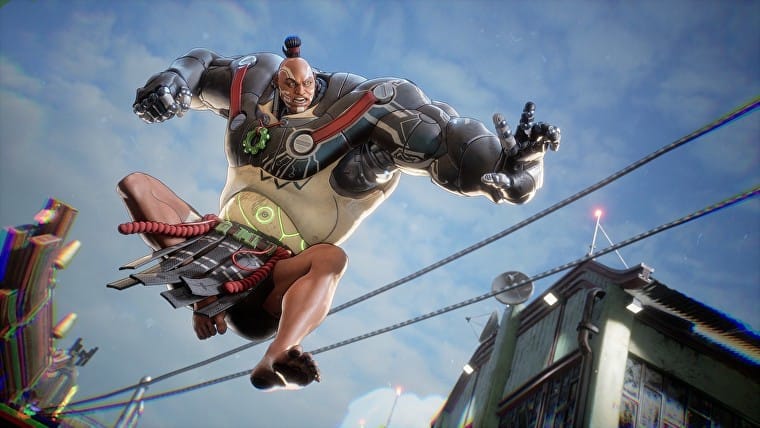
It’s one of several mechanics that make Bleeding Edge a ‘team-first’ fighter. Chasing someone to the edges of the map, hellbent on getting the kill, will only put your team in a weaker position. When melee combat is the focus, going aggressive makes you more susceptible to damage, meaning a balance between offense and defense is key. No amount of defense will save you from a lopsided fight, however, and any kind of numerical advantage will quickly turn the tide of battle. Ninja Theory is quick to remind you of this, from enabling party chat by default or offering loading screen tips like “make sure to target the enemy healer first!”. Communication is the key to victory in Bleeding Edge and it helps that four-on-four, objective-based battles create the game’s most captivating moments.
A model fighter
Ninja Theory hasn’t added any new characters since the betas, but they’ve already confirmed a new fighter: the ranged tank Mekko (a hyper-intelligent dolphin in a giant fishbowl on mechanical legs, go figure) that will release in the coming weeks. For now, there’s enough variety in the current fighters and the Mod system to find your favorite. Mods provide buffs like increased damage, health, and ability duration. Each character has 20 different Mods that unlock over time, but you can only equip three at once. As you can imagine, different combinations will make for vastly different playstyles.
For example, I gravitated towards Maeve’s ranged attacks and trapping abilities, which are great for landing killing blows. Her passive ability resets all cooldowns when you get a kill and Mod loadouts let me double down. With a combination that provides damage buffs for kills, I created a loadout that rewards aggressive play (providing I stay alive). However, I could have increased the duration of Maeve’s vanish and teleport abilities for a stealth-based approach. Each character has three Mod loadouts, allowing you to switch up your playstyles in-game. If more Mods are added in the future, the system has the potential to add real complexity to in-game matchups.

Edge of glory
There’s an argument that Bleeding Edge is, for now, a streamlined offering - with two game modes and five maps. The game’s longevity rests on Ninja Theory’s shoulders and how quickly and effectively they release new content. Given the lukewarm reception to Overwatch 2 and the hot water Blizzard finds itself in, though, Bleeding Edge has a very real shot at becoming your next favorite multiplayer hero shooter - only with fewer guns and more fisticuffs.
TechRaptor reviewed Bleeding Edge on Xbox One via Xbox Game Pass. The game is also available on PC via Windows 10 and Steam.
Review Summary
Pros
- Bold, Bright, Colorful Design
- Fantastically Unique Characters
- Pacing Cultivates Chaotic Battles and Tense Chases
- Xbox Play Anywhere and Cross Platform Multiplayer
Cons
- Maps Feel Too Large
- Sometimes Frustrating Slower Pace
- Team Focus May Deter Lone Wolves
Have a tip, or want to point out something we missed? Leave a Comment or e-mail us at tips@techraptor.net



